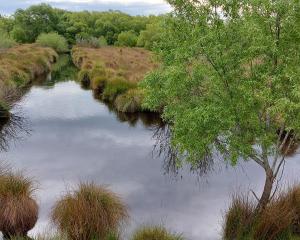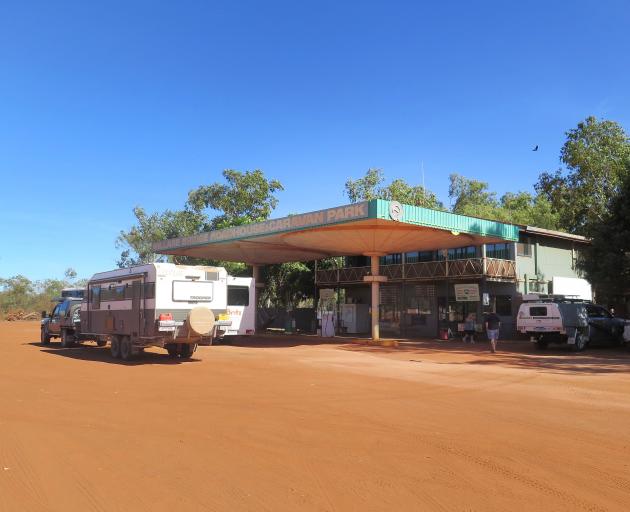
''It's the real deal,'' Warren, my AAT Kings driver, enthusiastically remarked, as I clambered aboard the coach for a journey of raw discovery, to shatter years of lazy preconceptions about the barren tedium of Australia's interior.
The Kimberley region is a marquee specimen of interior magic, widely billed as one of the world's last great wilderness environments. It's majestic, ethereal, awe-inspiring and formidably remote.
Book-ended by Broome and Kununurra, this extraordinary natural playground is sandwiched between ocean and huge, inhospitable desert. To illustrate the impressive dimensions of this largely untamed region, you could fit three Englands inside the Kimberley, which is one of the most sparsely populated regions in the world, home to just 25,000 residents, most of them Aborigines.
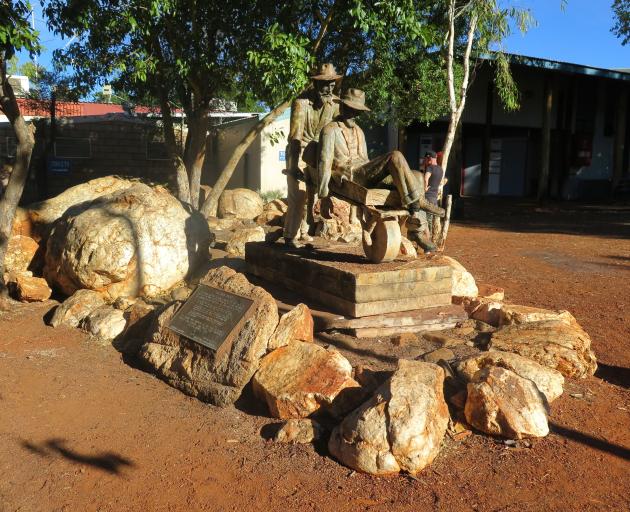
Over the course of 10 days, I clocked up over 3000km, charting a scenically diverse course from Broome to Darwin. As much as I love the liberation of a road trip, traversing the Kimberley as a self-drive soon struck me as a most unappealing proposition.
So I was more than happy for someone else to do the driving on the remote dusty highways and corrugated tracks that lace the region, while I soaked up the sights.
The unfolding landscape is surprisingly diverse and ever-changing, where arid tracts of flat baked earth and its red pindan soil yield to verdant savannah woodland and tropical grassland; there's oasis-like wetlands, aflutter with stunning birdlife, sprawling cattle stations and towering sandstone ranges sliced and diced by gorges, where rivers rage in the wet season, flooding everything in their path.
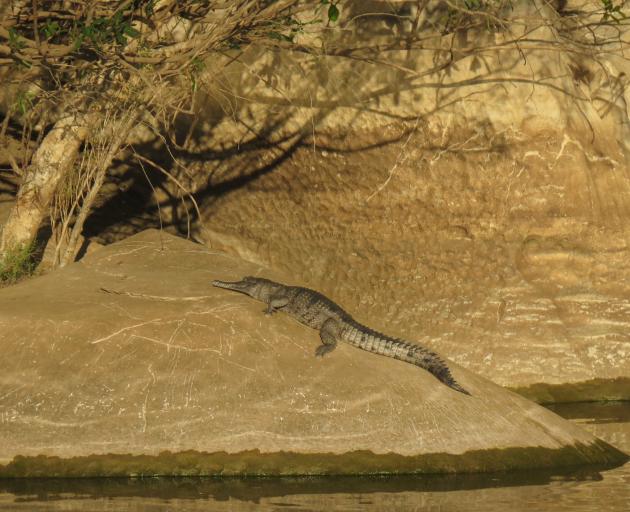
Pinned to the edge of the Northwest Continental Shelf, at the base of King Sound, Derby has the unique distinction of turning on a waterworks spectacle of staggering proportions. Because of its intimate proximity to the Northwest Shelf, Derby has one the world's highest tidal ranges, water levels rising and falling 11.5m as the tide changes. The best place to ogle this marvel of nature is the Derby jetty, a sweeping circular-shaped pier constructed on extremely high stilts.
I fast became infatuated with the Kimberley's trademark tree, the boab tree, an ever-present sight across the region, which can live for up to 1500 years. As you would expect from an ancient creature, every tree seems to assume its own quirky character. They are highly sculptural with stout belly-like trunks that look like swollen water bottles, while their crazily shaped twisting branches spawn fat boab nuts the size of duck eggs.
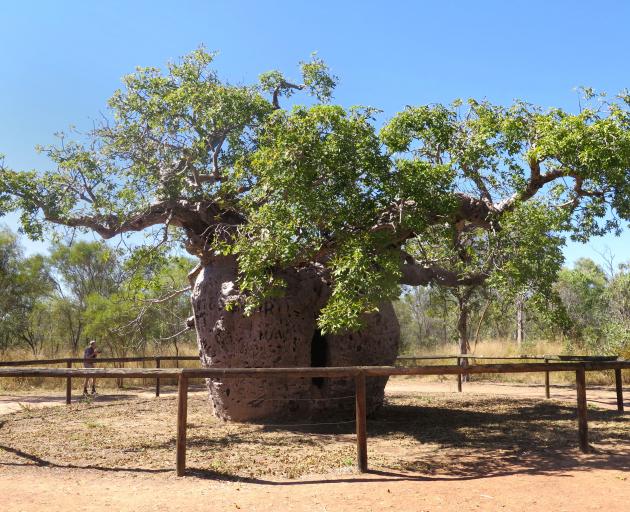
These trees are one of the few indigenous specimens in Australia that is deciduous. Their backstory is fascinating, as it's believed they are descended from Madagascar boabs, after boab seeds drifted across the Indian Ocean millions of years ago, to colonise the Kimberley. The other theory is that they are a hangover from Western Australia and Africa being joined at the hip, before the breakup of Gondwana, 65million years ago.
For millennia, the Aboriginal people have revered these giants as a source of shelter, food and medicine. Today, many Aboriginal artists use boab tree nuts for carvings and paintings.
Just 7km out of Derby, we followed the signposts to the Boab Prison Tree.

Dovetailing with the raw drama of the landscape, there's an inescapable sense of horror and tragedy ringing out from these ancient lands. The story that disturbed me the most was when Delma, our delightful travel director, lifted the lid on Kimberley's shameful record of ''blackbirding''. As the pearling boom took hold in Broome, some European settlers noted how adept the coastal Aboriginal people were at deep diving for pearl shells. That prompted them to round up thousands of Aboriginal people from the interior, kidnapping them and relocating them to Broome as indentured labour. Unlike their coastal cousins, the inland Aborigines had never been in the ocean - and they subsequently drowned as they were forced to dive for pearls.

Wracked by alcohol abuse, domestic violence and a severe diabetes epidemic, their health problems mean dialysis clinics are a growth industry in these parts.
Despite the deep-set social ills permeating the Aboriginal communities, there are signs of hope. Tourism is manifestly opening up substantial job opportunities, alongside the delivery of decent education. We visited a particularly remote Aboriginal community school, home to the Yiyili people, a community of 250 people scattered across Louisa Down. Alongside the school, we admired the local artworks in Laari Gallery, a superb place to buy an uber-authentic piece of indigenous art.
My runaway scenic highlight in the West Kimberley was encountering the blazing grandeur of Geike Gorge at sundown.

Millions of years ago, this limestone reef was submerged by an ancient sea. During the wet season, the river rises more than 16m, permanently staining the gorge's vertiginous limestone walls. As we drifted through the gorge on a cruise, the waterline bleaching was strikingly conspicuous, the floodwaters having partially polished the stone white.
As it was early in the dry season, the river resembled a far more sedate ribbon of water, as we glided by the 60m-high cliff walls and the multicoloured limestone strata. The riverbanks were lushly fringed by gums, coolabahs, mangroves, pandanus, cadjeput and native figs. Frissons of delight rippled through our group when we spotted freshwater crocodiles sunning themselves on the water's edge.
The boat tours are expertly guided by Bunuba Aboriginal people, who provided fascinating insights into gorge's cultural richness, but nothing can compete with the blazing theatrical splendour of the lowering sun striking those cliff walls, seemingly setting them on fire - and the water, through its reflected glory. It's a retina-burning spectacle.
Just 20 minutes from Geike Gorge, is Fitzroy Crossing, one of two towns in the 1000km stretch of West Kimberley.
Situated on the banks of the Fitzroy, in full flood, this river morphs into one of the world's largest, rising 13m. In a sure reminder of nature's raw power, our overnight roost, the Fitzroy River Lodge, was strung across elevated platforms - so guests aren't washed away in the Big Wet.
Halls Creek is the only other town in West Kimberley, home to a fabulously carved statue in the town square of a local legend, Russian Jack. Halls Creek was where gold was first discovered in Western Australia, in 1885.
Russian Jack was working in the goldmines and famously pushed his sick friend in a wheelbarrow 300km through the Great Sandy Desert to Wyndham, the nearest town with a medical centre at the time.
His heroic, epic journey is immortalised beautifully in an elaborate bronze statue.












